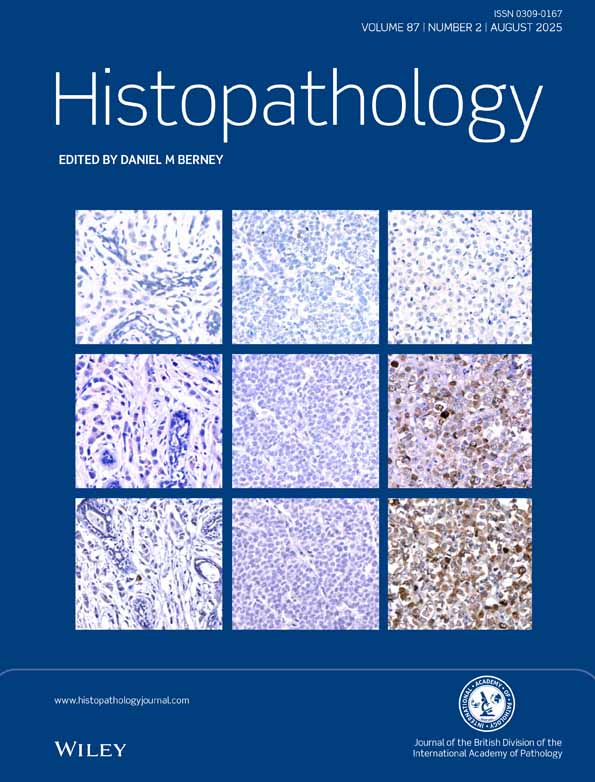Inflammatory pseudotumour (inflammatory myofibroblastic tumour) of the pancreas: a report of six cases associated with obliterative phlebitis
Abstract
Aims:
To describe in detail an uncommon pancreatic condition, which generally presents with cholestasis and a mass lesion suspicious of malignancy, and which is characterized histologically by proliferation of fibrous tissue with associated moderate or marked inflammation, as well as obliterative phlebitis.
Methods and results:
Out of a consecutive series of 23 pancreaticoduodenectomy specimens which on histological evaluation were found to contain no malignant tumour, six cases characterized by the features mentioned above were identified and investigated further. Poor circumscription, firm consistence, histology of dense sclerosis with scattered round cell infiltrates and associated obliterative phlebitis and often perineural accentuation of inflammation were the distinguishing features. On the basis of available histoloigical evidence, the term inflammatory pseudotumour perhaps remains the term best suited to designate this entity, since it sums up its two most distinctive features. However, the possibility that this lesion is in fact a neoplastic process with reactive inflammation (inflammatory myofibroblastic tumour) cannot be ruled out on the basis of the histology, and remains a serious consideration in view of the proven neoplastic nature of lesions with very similar histology arising elsewhere in the body. Importantly, none of the pancreatic lesions reported here recurred or progressed (five informative cases, median follow-up time 70 months).
Conclusions:
Inflammatory pseudotumour (inflammatory myofibroblastic tumour) of the pancreas may closely mimic pancreatic adenocarcinoma clinically and radiologically.




